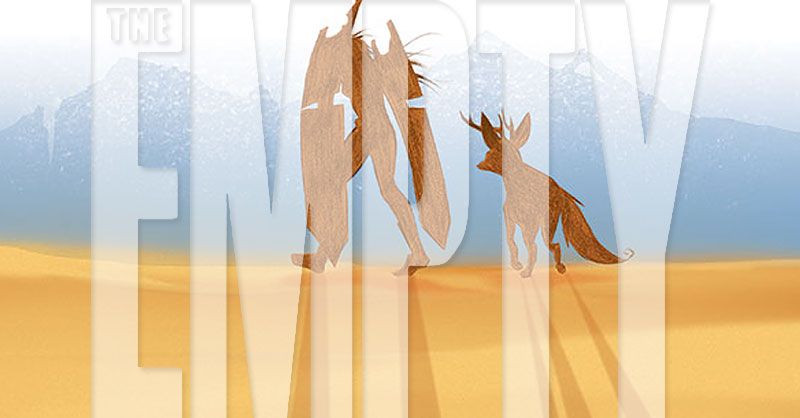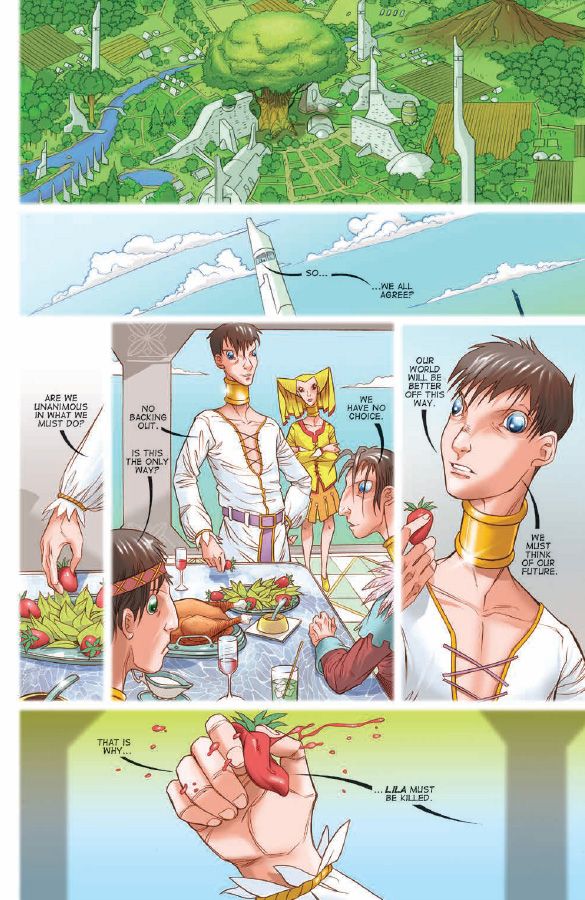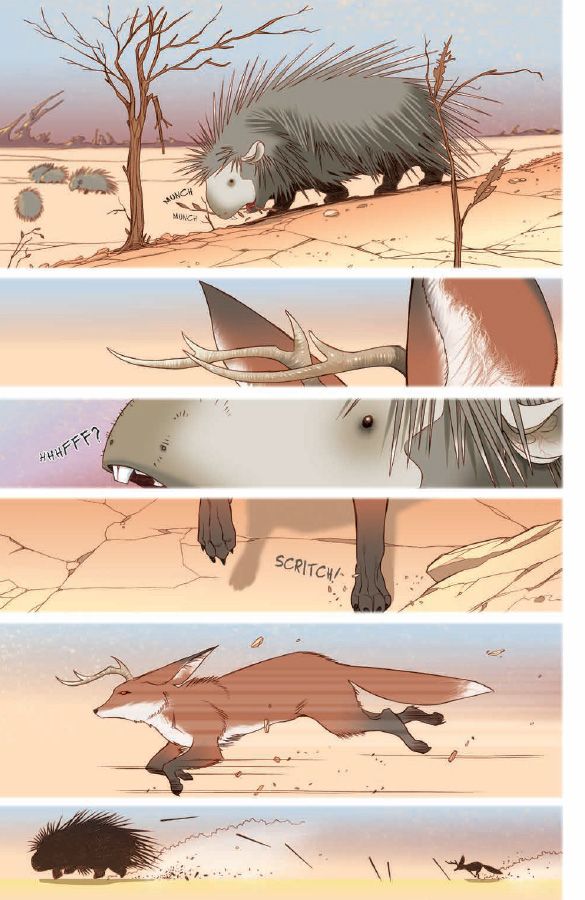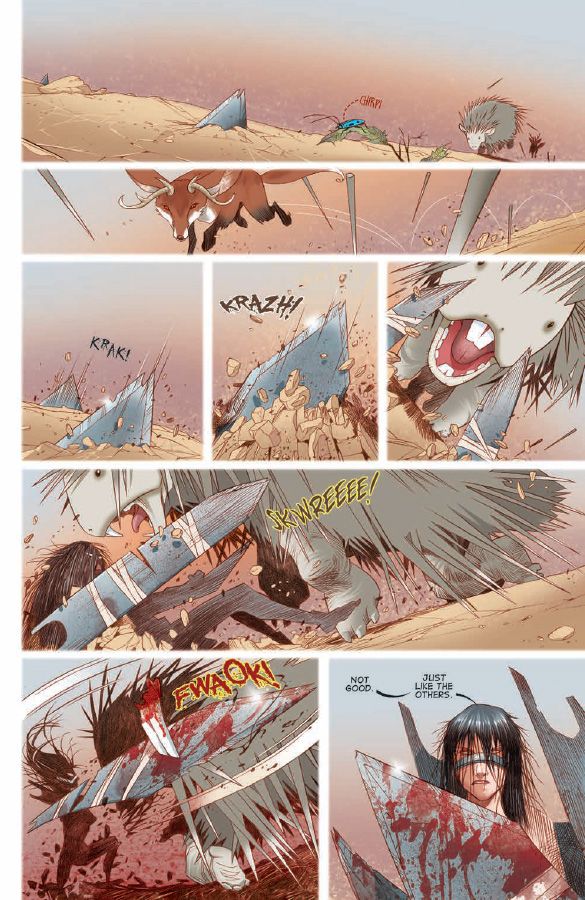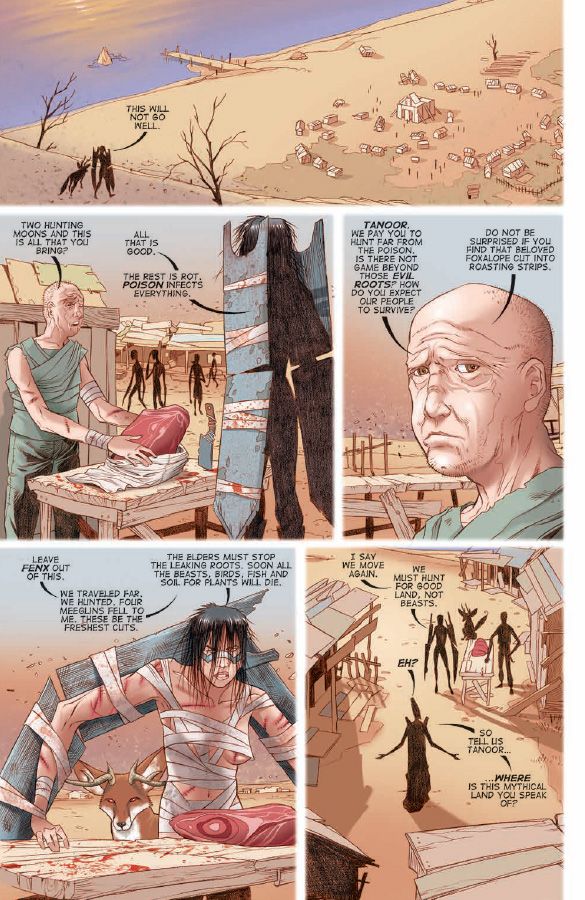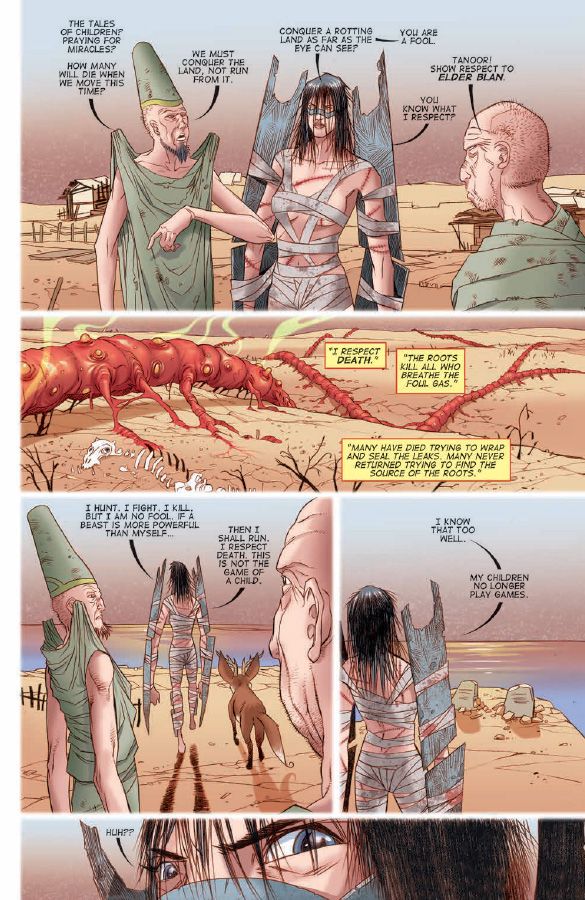Throughout comics' history, there have been numerous intriguing stories involving apocalyptic scenarios, involving everything from alien invasions to reality-breaking punches. This month, creator Jimmie Robinson ("Bomb Queen," "Five Weapons") brings his own world-ending tale to Image Comics in "The Empty." Released under the Shadowline imprint, Robinson's tale is populated with characters from different backgrounds all tasked with the same mission: to work together in order to save a dying planet. And while some may look at this as an analogy for our world, Robinson's explanation, involves a somewhat more "aquatic" theme.
"This is a fish-out-of-water story. It's set in a Mad Max-esque world, with an apocalyptic landscape and a handful of people trying to survive, but a stranger from another world enters and changes the rules. This stranger is like Poison Ivy (from the Batman books). She can grow lush and vibrant things in a world that is basically brown and dead. You can imagine how important that is -- and the problems it can cause. Some characters want to exploit her powers, while some characters see her as a threat and want her dead. It's like a nuclear arms race, but with farming as the power."
While "The Empty" is designed to introduce the setting and its characters to readers in an initial six-issue story arc, Robinson has the comic plotted out to issue #20. His hope is to tell a complete story at first, setting up the book's universe. If readers like what they see, Robinson will visit "The Empty" again, and explore every corner of its world.
"I've had this story in my head for a long time," he explained. "In the 1990s, I did a short story based on the same concept; however, the setting was completely different. It was a classic medieval setting, with swords & sorcery and all that jazz. It was published in an anthology called 'Mythography.' When I dusted off the idea last year, I gave it a new spin and a huge twist. I figured it was time to play in the fantasy realm again."
With the series based in the aforementioned genre, readers may be expecting Boris Vallejo-styled warriors, defending women from horrific creatures. Robinson, however, has inverted this expectation, placing two women front and center as the story's protagonists -- and you can be sure that neither of them is riding a dragon while dressed in a chainmail bikini.
"'The Empty' features two strong female lead characters, Tanoor and Lila, and the story is about how their diverse worlds collide. Tanoor is a fighter and hunter for her village in the Empty -- a vast desert wasteland where hardly anything grows. Life is harsh, and survival is a daily challenge. Lila is the complete opposite, though -- she comes from a land of plenty. Her world is a paradise compared to the Empty. When the story begins, Lila ends up inside the Empty and must team up with Tanoor. Unlike Tanoor, Lila is not a fighter or a survivor, but has a gift for growing things in a world where vegetation is scarce. This may make readers wonder if the story is about Tanoor saving her village with the help of Lila's abilities, or if it's about Lila finding her way back home with the help of Tanoor's fighting skills. I like to think it's a bit of both."
While the characters are going to need strength of spirit and mind, Robinson makes it clear that the women's external appearances are also an important part of the comic. Therefore, Tanoor and Lila don't appear with standard superheroine builds. "I didn't want the female form to overshadow the story, like Bomb Queen, Red Sonja, or Vampirella," Robinson explained. "Don't get me wrong -- I enjoy that style (after all, I created Bomb Queen). But for 'The Empty,' it just didn't seem right. I wanted more of a 'Mad Max' feel and vibe. I wanted things to be dirty, bloody and gritty -- basically, no fun whatsoever.
"That means no properly combed hair, no ruby red lips, no lovely clothing, and no large busts or unscratched porcelain skin. But I went even further than that: I actually changed their physical appearance. Tanoor is tall, with extremely long arms (down to her ankles) and she has battle scars all over her body. Her clothing pretty much consists of just bandages.
"On the other hand, Lila is frail and pale, and she has a very long neck. Her neck is weak, and supported with a gold band. Also, her eyes are on the side of her head, like a deer, and large, like an anime character. In short, she comes from a race that has never hunted. It's not in their DNA. Lila's clothes look like they came from the European Renaissance era. These two women couldn't be more different from each other -- and from other typical comic characters."
As indicated, the world of the Empty is a dangerous one. In addition to the various creatures found in the comic, its setting is a planet that's on life support. And it's this latter point that drives the story forward, according to Robinson.
"The main conflict centers on the mysterious, poisonous roots that lace the planet. The roots dig deep into the soil and emit a deadly gas which kills everything in the area. Nothing escapes it. Plants and animals are all affected, but nobody knows where these roots come from. It's like seeing the roots, but not the tree. Tanoor wants to stop the source of the roots, which would save her people and bring life to the land.
"The world is strangely different from any we've seen. Odd creatures roam the ruins of the Empty. The reader doesn't know if this is our world, a similar world, or an alternative world. Is this the distant past? A far-flung future? We discover all the secrets as Tanoor and Lila search for the source of the poison roots that are destroying the planet.
"And there are other dangers beyond the roots. Just like any good horror or zombie story, we soon find that the worst monsters are often ourselves. Lila's arrival to the Empty is ripe with dark secrets. Self-preservation in the Empty often leads to prejudice and short-term vision. Everyone has an agenda in this wasteland; fighting monsters are just the icing on the cake."
While Robinson wants to hold onto most of the book's secrets, he did provide us with a look at the first two issues, and the plot twist at the end of issue #2 may lead many readers to see this story as an allegory for the potential dangers of a situation our government is dealing with. Asked if this was his intent, Robinson gave a response worthy of a politician -- he would neither confirm nor deny it.
"It can be seen that way. I admit, I am an environmentalist of sorts. However, this isn't a didactic story, hammering readers over the head with a message. First and foremost, I want to tell a compelling story with unique characters. The possibility of it being an environmental allegory is pretty much like saying 'Moby Dick' is about saving the whales. We all know that's not what 'Moby Dick' is about; although if someone wanted to, they could slant it to fit their mold. I hope that doesn't happen with 'The Empty,' because there is a lot more to this than a simple message of saving the planet.
"As a creator, you don't really have control over how a story will be accepted by the readers. I recall a sci-fi series I self-published in the 1990s called 'CyberZone.' I thought I was just making 'Blade Runner'-type stories, but it featured a lesbian as the lead, and the reader's reaction followed her more than the story. That series later developed into the Image comic 'Amanda & Gunn.' It's strange how things sometimes develop outside of your control. So if reviewers see an allegory, I have little control over that. The same thing happened with 'Five Weapons,' when reviewers were calling it '"Harry Potter" with guns.' I can see the comparison, but at the same time, that was the exact opposite of the story."
When someone reads a Jimmie Robinson comic, hopefully they appreciate that they're looking at the work of a single individual, and for those curious about his process, he was happy to talk about his approach.
"I pretty much do things one at a time," Robinson said. "I will write the book from beginning to end. Then pencil it, color it, and letter it from beginning to end. Rinse and repeat for each issue. However, at the very beginning, I will plot out and outline the entire story arc. I like to know the end of a story before I tackle it. I do this for all my books, and since I'm creating these books at Shadowline/Image, I have 100% control of my production."
Having this level of control over his books allows Robinson to manipulate minutiae fans don't often notice as they read his work, though it can definitely impact the reading experience. This can come down to the colors used or the font selected. In the case of "The Empty," Robinson has chosen a distinct style for dialogue, one that doesn't use word balloons. It's quite effective in setting the mood for this apocalyptic tale and is something he's experimented with previously. "I did this style of lettering before," he explained. "It was a 194-page graphic novel published by Image back in 2005. It was called 'Avigon: Gods & Demons.' It was written by Che Gilson, based on her 'zine 'Avigon.' I liked the story and brought it to Image. The lettering style came from her, which in a way comes from Japanese manga (which is her specialty). They often free-float whole sections of dialogue; even 'Saga' has some free floating dialog for narration.
"It takes a lot of foresight to work this way. The art has to be designed in a way that allows open space for the lettering, yet still flow in a way, from character to character, without distracting the reader. It also leaves me more space to draw. When world balloons are used, they often cover the art in the background. Without word balloons, I can get the lettering closer to the characters, and it opens up the page, because the eye sees more color and less patches of white all over the place."
Considering the amount of work Robinson pours into a single issue, it's no surprise that he can only manage one series at a time. And while he'd like all of his series to have lengthy runs, that, unfortunately, is a challenge in the current market. His last series, "Five Weapons," abruptly ceased publication, even though Robinson had more stories planned. "Yeah, we were all bummed about 'Five Weapons.' It was well-received by critics and it had a dedicated fan base, but the orders were not there. It was just a mere 300 copies away from cancellation. At that point, I was paying the colorist out of my own pocket. Any profit from the book went to the colorist Paul Little (and he deserved it).
"If the book went under the cancellation zone, I'd have to pay Image and the colorist against the low orders. So I had to end it at issue #10, which was right in the middle of the story arc I was hoping to finish. Basically, I had to truncate the ending and add a quick prose-filler explanation so there would be no dangling threads. The funny thing is, now people ask about it all the time, and the trade collections are both in the black and making money. I almost think if I kept with it, things might've turned around. Who knows? But it was a very hard, uphill battle.
"Would I like to return to 'Five Weapons' and finish the story arc? Yes! Do I think the result might be the same? Sadly, yes. I know there is a dedicated reader base for 'Five Weapons,' I just don't think it's big enough to keep the series alive in the current market. Never say never, though. If 'The Empty' does well enough, I might be able to switch back and forth."

